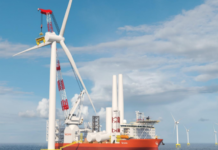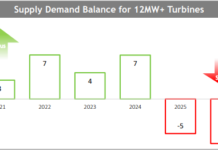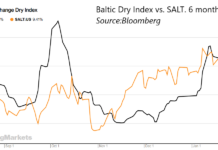Doug Young
![159px-Paddy_and_farmer_and_wind_turbines_in_India[1].jpg](http://www.altenergystocks.com/wp-content/uploads/2017/08/159px_Paddy_and_farmer_and_wind_turbines_in_India_1_.jpg) Rice farmer in India with wind turbines. Photo courtesy of Vestas Wind Systems (VWDRY) |
With its new energy sector tottering on the brink of collapse, China no longer seems to care if foreign government accuse it of unfairly supporting its sector with low cost loans and other state subsidies. That at least appears to be the message from a new plan by Ming Yang Wind Power (NYSE: MY), which has just announced a massive new tie-up with policy lender China Development Bank to provide financing for wind power projects in India. (company announcement)
While this kind of financing to support developing sectors isn’t unique to China, this particular announcement is quite large, with Ming Yang saying in a separate statement that it will team with China Development Bank and locally based power giant Reliance Power (Mumbai: RPWR) to “raise” up to $3 billion in financing for new projects. (English article) I use quotation marks around the word “raise”, because I’ve no doubt that all of the money will come from China Development Bank and other state lenders, which are almost certainly providing the money under direct orders from Beijing to rescue the struggling sector.
Let’s quickly have a closer look at this latest news, which comes as China’s broader new energy sector suffers due to a big global supply glut, created largely by the massive building of new capacity in China over the last decade with strong support from Beijing. Under this new framework deal, China Development Bank will coordinate and arrange financing for new wind power projects to be co-developed in India by Reliance and Ming Yang. The 2 partners have previously announced plans to co-develop new projects with 2,500 megawatts of capacity over the next 3 years, so this financing deal appears to be an extension of that plan.
This latest news indicates that China Development Bank will likely become the centerpiece for Beijing’s broader rescue package for the new energy sector, as this policy lender is already reportedly at the center of a broader plan to rescue struggling solar panel makers. That plan would reportedly have China Development Bank provide emergency financing for about a dozen of the country’s biggest solar panel makers, which would then become consolidators for the broader industry that includes many more companies that are posting massive losses.
The sector has also been hit by anti-dumping actions in both the US and Europe, its 2 biggest markets that account for the big majority of its sales. Ming Yang is one of the few new energy companies that is still profitable, reporting a tiny profit of less than $1 million for the third quarter of this year. But that profit was down 97 percent from the previous year, with revenue also down by nearly 60 percent, and it looks like Ming Yang could easily join many of its Chinese new energy peers by reporting a loss in the fourth quarter.
Investors seemed to sense a certain gloom and desperation in this latest announcement, bidding down Ming Yang shares by 2.2 percent after the news came out. That’s hardly the reaction that Ming Yang was hoping for, but seems to reflect broader investor gloom towards China’s new energy companies as they move closer to a Beijing-led bailout. When that bail-out finally comes, it could easily include conditions that cause these companies’ shares to become either greatly diluted or completely worthless, creating big losses for shareholders. Look for that package to come most likely by the end of next year’s first quarter, creating further turbulence in the already-weak market for Chinese new energy stocks.
Bottom line: The latest state-led financing for Ming Yang indicates China will bail out the new energy sector using its China Development Bank, with a broader plan likely by the end of next March.
Doug Young has lived and worked in China for 15 years, much of that as a journalist for Reuters, writing about publicly listed Chinese companies. He currently lives in Shanghai where he teaches financial journalism at a leading local university. He also writes daily on his blog, Young’s China Business Blog, commenting on the latest developments at Chinese companies listed in the US, China and Hong Kong. He is also the author of an upcoming book about the media in China, The Party Line: How The Media Dictates Public Opinion in Modern China .








If power satellites are constructed, there will need to be many times the current production rate for PV. The problem is so bad that thermal type power satellites might have to be constructed to deal with the shortage of PV cells.